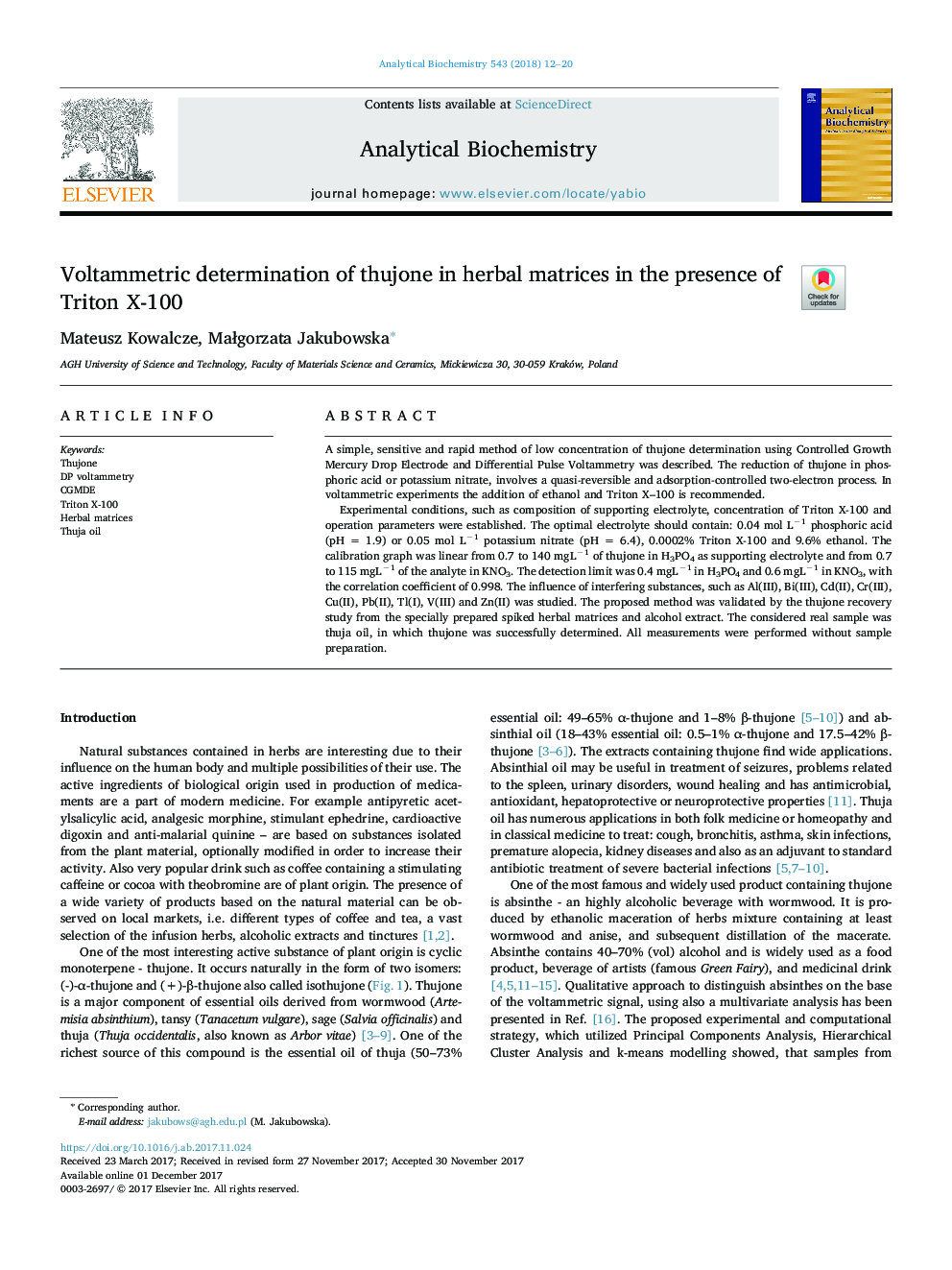| Article ID | Journal | Published Year | Pages | File Type |
|---|---|---|---|---|
| 7557055 | Analytical Biochemistry | 2018 | 9 Pages |
Abstract
Experimental conditions, such as composition of supporting electrolyte, concentration of Triton X-100 and operation parameters were established. The optimal electrolyte should contain: 0.04 mol Lâ1 phosphoric acid (pH = 1.9) or 0.05 mol Lâ1 potassium nitrate (pH = 6.4), 0.0002% Triton X-100 and 9.6% ethanol. The calibration graph was linear from 0.7 to 140 mgLâ1 of thujone in H3PO4 as supporting electrolyte and from 0.7 to 115 mgLâ1 of the analyte in KNO3. The detection limit was 0.4 mgLâ1 in H3PO4 and 0.6 mgLâ1 in KNO3, with the correlation coefficient of 0.998. The influence of interfering substances, such as Al(III), Bi(III), Cd(II), Cr(III), Cu(II), Pb(II), Tl(I), V(III) and Zn(II) was studied. The proposed method was validated by the thujone recovery study from the specially prepared spiked herbal matrices and alcohol extract. The considered real sample was thuja oil, in which thujone was successfully determined. All measurements were performed without sample preparation.
Keywords
Related Topics
Physical Sciences and Engineering
Chemistry
Analytical Chemistry
Authors
Mateusz Kowalcze, MaÅgorzata Jakubowska,
